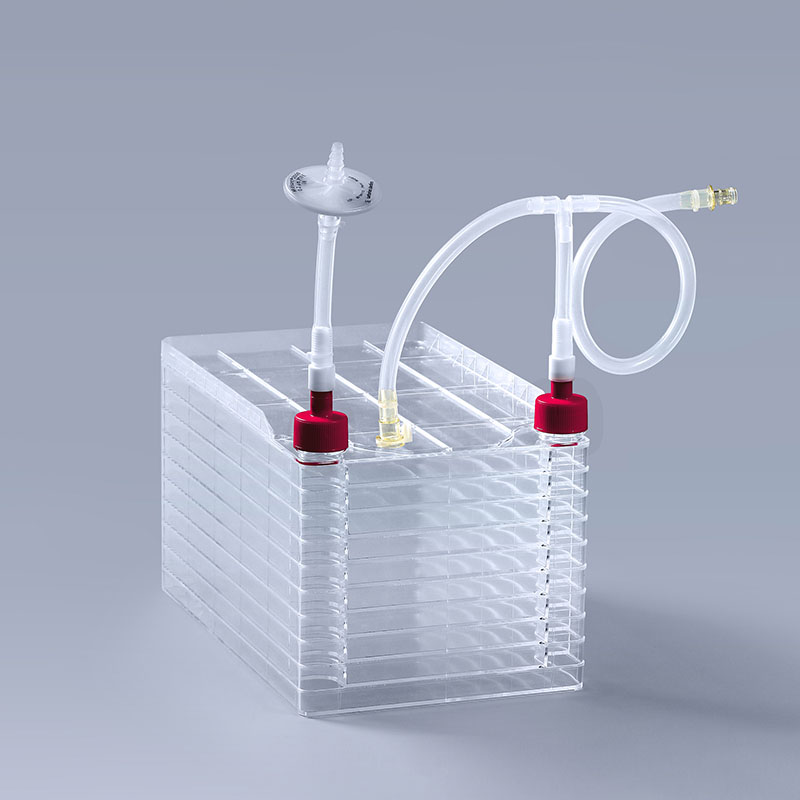With the continuous advancement of medical technology, cell factory as multi-layered cell culture containers, are bringing revolutionary changes to the field of vaccine preparation.
Multi-layered Structure and Material Selection: cell factory are made of materials such as polystyrene. Common specifications include 1-layer, 2-layer, 5-layer, 10-layer, 40-layer, etc. Their multi-layered design allows for a larger cultivation area within a relatively small space, thus saving production space costs.
Scope and Application: cell factory are mainly used for adherent cell culture, playing a significant role, especially in the large-scale preparation of vaccines. Their efficient cultivation systems provide reliable technical support for vaccine production, greatly shortening the vaccine preparation cycle, and improving vaccine yield and quality.

Space Cost Savings: Due to their small footprint and large cultivation area, cell factory save valuable space resources in vaccine production facilities, reducing production costs, and providing pharmaceutical companies with economic benefits and competitive advantages.
Reduction of Contamination Risk: Equipped with dedicated pipeline systems, they can reduce the risk of exogenous contamination, ensuring the purity of the cell culture environment, thereby increasing the success rate and efficiency of vaccine production.
As an innovative technology in the field of vaccine preparation, cell factory have brought about significant changes and improvements to vaccine production. Their efficiency, space cost savings, and reduced contamination risk make them an indispensable tool in the modern biopharmaceutical industry, contributing positively to global public health.
The FAI climbed 5.9 percent year-on-year in the first 11 months of 2018, quickening from the 5.7-percent growth in Jan-Oct, the National Bureau of Statistics (NBS) said Friday in an online statement.
The key indicator of investment, dubbed a major growth driver, hit the bottom in August and has since started to rebound steadily.
In the face of emerging economic challenges home and abroad, China has stepped up efforts to stabilize investment, in particular rolling out measures to motivate private investors and channel funds into infrastructure.
Friday's data showed private investment, accounting for more than 60 percent of the total FAI, expanded by a brisk 8.7 percent.
NBS spokesperson Mao Shengyong said funds into weak economic links registered rapid increases as investment in environmental protection and agriculture jumped 42 percent and 12.5 percent respectively, much faster than the average.
In breakdown, investment in high-tech and equipment manufacturing remained vigorous with 16.1-percent and 11.6-percent increases respectively in the first 11 months. Infrastructure investment gained 3.7 percent, staying flat. Investment in property development rose 9.7 percent, also unchanged.
 English
English


















































